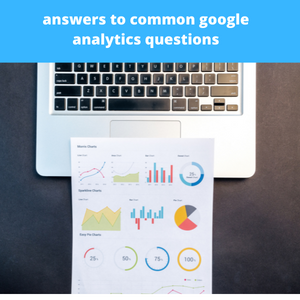Google Analytics Be unable to Identify Sessions
You may have noticed that Google Analytics has stopped identifying sessions from the same user by default. If so, there is a solution to this issue: Setting a timeout on your analytics reports. However, this option is only applicable if your Google Analytics account is set up with multiple domains. To ensure that your Google Analytics account is unique, you should set a timeout that is a few hours, preferably less.
Session timeout
If a visitor has visited your site multiple times in a short period of time, then the timeout may have affected the data collected. The session timeout defaults to 30 minutes, which is widely accepted by digital analytics tools. However, there are several ways to fine-tune the timeout. You can set a different time limit for each session, as needed.
A typical user will keep multiple browser tabs open while using a website. They may switch between tabs frequently, resulting in frequent breaks. Users might view your website for a few minutes, then switch to another tab and complete another task. Then, they’ll return to the website, and the default session timeout value of 30 minutes does not reflect this frequent switching between tabs, skewing analytics data.
To resolve this issue, you should change the session timeout for your website. The default value is 30 minutes, but you can change this value as needed to meet your needs. Setting it too low will cause users to abandon your website, while setting it too high will result in unnecessary data collection. You may also want to set the timeout to be higher to prevent too much skewing in Google Analytics outputs.
Identifying sessions from the same use
Identifying sessions from the same use is a helpful way to understand user behavior. If someone visits your website and then immediately returns and views several different pages, you can segment these sessions using the unique pageviews metric. This measure can help you understand how long users stay on your site. The higher the number of pageviews, the more likely it is that a user will return and visit your website multiple times.
A good way to distinguish new and returning visitors is to set a time limit on the number of sessions a user has on your website. By default, Google Analytics treats sessions as new when a user first visits the site. If they return to your website after a break of at least 30 minutes, however, the time limit is automatically increased, creating a new session. This can create a large number of duplicated sessions.
In this scenario, the user has seen the Black Friday promotion, clicked on the email, and then comes back to your website. Later, they check their email and click on another link to a similar jacket. They continue browsing the site, and buy both jackets. This is an example of identifying sessions from the same use in Google Analytics The same user may have visited your site multiple times, and each time they came back to it, the sessions will be recorded.
Setting a session timeout in Google Analytics.
When you see a message that states that Google Analytics can not identify sessions from the same use, you may need to adjust the timeout interval on your site. By default, the timeout interval is 30 minutes, which is far too short for your needs. If your visitors are frequently switching between tabs, you may want to increase the timeout to a longer period. This will help your analytics data better reflect the actual activity on your website.
You can manually set a different timeout value for a campaign or a single session. Most digital analytics tools recommend a 30-minute session timeout for campaigns. However, if you want to fine-tune the timeout value, you can create a specialized tracking request to determine which timeframe is more suitable for your goals. It is important to understand the impact of modifying the timeout period, because it can have a significant impact on your analytics.
Changing the session timeout in Google Analytics will cause more than one session to be created for the same use. This will lead to lots of duplicated sessions. However, you can make a difference by setting the timeout to 30 minutes or four hours. In either case, you must submit any changes to Google Analytics to get the results you need. This can reduce the number of 0 second sessions.






